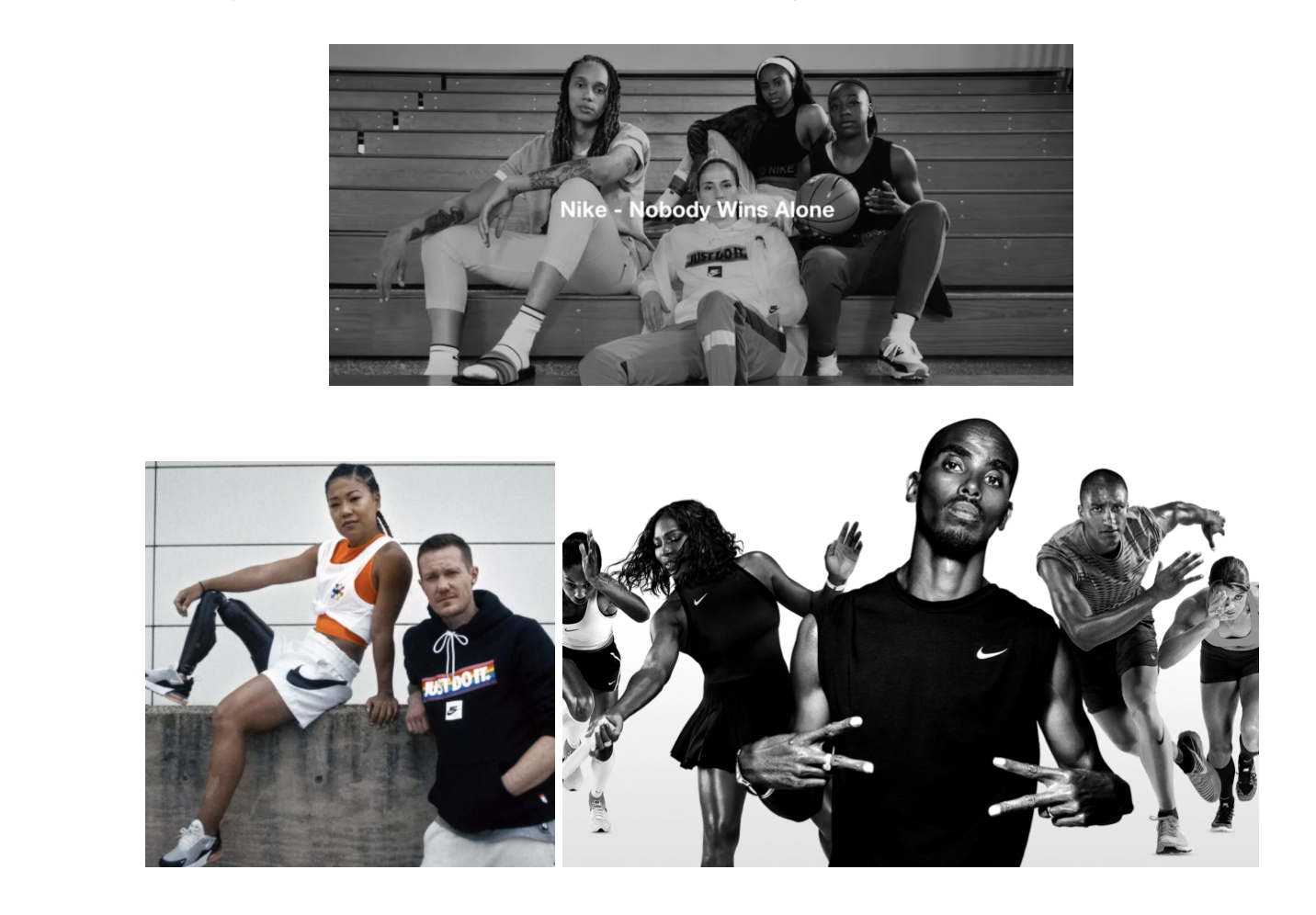Images Matter.
Representation Matters.
Positive Representation Matters.
An image speaks volumes. As we engage more online, we are constantly using imagery to represent ourselves, our brand messaging, our products, and our affiliations. An image makes a statement about what is being represented and how it is represented. That representation makes an impression on people both individually and culturally as impacted by context and reception. The impression or statement an image makes can positively or negatively affect your personal and/or professional reputation.
Your reputation influences who works with you and who your followers and fans are. It influences how people treat you and how they perceive you. It encourages or discourages sales, opportunities, collaborations, sponsorships, and more. The images you align yourself with and use to convey brand messages reinforce your personal reputation and your brand reputation. So how do you ensure you are selecting tasteful images that will be well received by not just your target audience, but the global public? How do you ensure a positive representation?
The answer lies in the context with the awareness that context is no longer static, single-layered, simple, or stereotypical. “Context is dynamic,” and can be interpreted differently by different people depending on various factors. The number one rule is to be mindful of what your image is portraying.
Here are 4 factors to quality check when selecting images.
-
-
Context and Environment
- Physical, psychological, cultural, geographical, and other conditional factors that impact overall messaging (time, medium, text, tone, etc.).
-
Actors / Agents
- People or subjects in the image, people or subjects not included in the image, the target audience, the unintended audience, and the brand or business supplying the image.
-
Interaction
- How the subjects in the image are relating, how individuals viewing the image relate to it, how people relate to it in a community or public context.
-
-
Outputs / Outcomes
-
-
- The resulting action or message received internally (individual level) or externally (public opinion).
-
Thus the question becomes how can we be more intentional about choosing images that positively represent ourselves, our brands, our products, and even our messages?
Repurposing Stephen Behrendt’s break down of contextual analysis, we can begin to analyze our image selection by asking ourselves:
- What does the image reveal about itself or the publisher / repurposer?
- What does the image say about its apparent intended audience(s)?
- What appears to be the publisher’s intention?
- What could physically, psychologically, or realistically be the image’s intended and unintended outcome?
- What is the occasion for the image?
- What news, trends, or other recent or relevant occurrences or movements could impact the reception of the image?
In today’s climate, positive representation is required and diversity is more than appreciated. However, do not make the mistake that one individual can be reflective or representative of an entire audience or a lifestyle. Also, do not make the mistake that only one group of people will see, relate to, or be concerned with how the images represent them. Thanks to the internet and the wide-spread use of social media, all forms of content are shared with the world – regardless of intention or privacy settings.
Inattention to detail and choosing the wrong image could cost your business hundreds of thousands of dollars and even cause consumers to lose faith and trust in your brand. After the Coronavirus outbreak and the resulting pandemic’s impact on the global economy, businesses and brands cannot afford to misalign their messaging. Customers are more mindful than ever and ready to call out businesses for poor choices in imagery or messaging.
In 2020, Burt’s Bees missed the mark when they announced they had a line for babies. While they managed to portray a diverse target audience, there was one noticeable difference in the black family that was not present in all of the other families – there was no dad.

Some sources claimed that the father that was hired to play the dad was unable to be present for the photo shoot. Even if that is the case, is that answer enough to undo the damage done by reinforcing a negative stereotype of black families as being single-family homes?
Even big brands struggle to ensure positive representation across the board. Back in 2018, Macy’s made a similar error in judgment in which a black family was missing the same key figure – the dad. While the ad set was thoughtful enough to include LGBTQIA+ representation, the black family portrayal was enough to reinforce negative stereotypes.

This insulted not only the affected audience but a very public, very global interconnected audience who took fault with these big brands for being insensitive and tone-deaf. It is no longer okay to reinforce negative stereotypes. Why? Positive representation matters.
After decades of bad stereotypes and underrepresentation, customers want to know that brands truly understand them and are sensitive to their representation. Customers want to support brands where they see themselves positively represented. Consumer mindsets shift monthly and the “norm” is constantly evolving. Aim to create timeless content with imagery that is mindful of positive trends and portrayals.
Not everything has to be overly optimistic or cheery to be positive and mindful. Take Nike for instance, which is more serious and raw. Subjects are goal-minded and focused. They are not often smiling. Even when they are, there is an air of victory not just celebration for kicks or for a reason that seems implied. This reinforces the brand promise to inspire people to accomplish what they set out to achieve, which is echoed in their tagline, “Just Do It.”
 Apple’s style is clean and modern, with white and silver as primary colors giving the brand a future-minded tone. They also aim to portray simplicity and ease of use for new technology, which could be perceived as intimidating if you are not an early adopter or tech-savvy. Yet they infuse whimsy and wonder subtly with color and graphics.
Apple’s style is clean and modern, with white and silver as primary colors giving the brand a future-minded tone. They also aim to portray simplicity and ease of use for new technology, which could be perceived as intimidating if you are not an early adopter or tech-savvy. Yet they infuse whimsy and wonder subtly with color and graphics.
 Go back and review your images. Do they illustrate positive representation?
Go back and review your images. Do they illustrate positive representation?
As you execute your 2021 marketing strategy, be sure to include a clear guideline for how your imagery and messaging will not only support and showcase the target audience, but will respect or positively represent unintended audiences.
We help our clients get visible, found, and paid everyday. We can help you too.
- Plan Better – This is the Pro-Tip Every Entrepreneur Needs - February 6, 2025
- Three Tactics for Driving Traffic to Small Business or e-Commerce Websites - December 12, 2024
- Spark Creativity: Make Your Life the Content - October 3, 2024


0 Comments